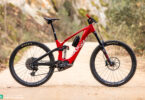The eMTB group test characteristics and application explained in detail
“Which bike is right for me?” To help you answer this question, you should know the following things about our group tests!
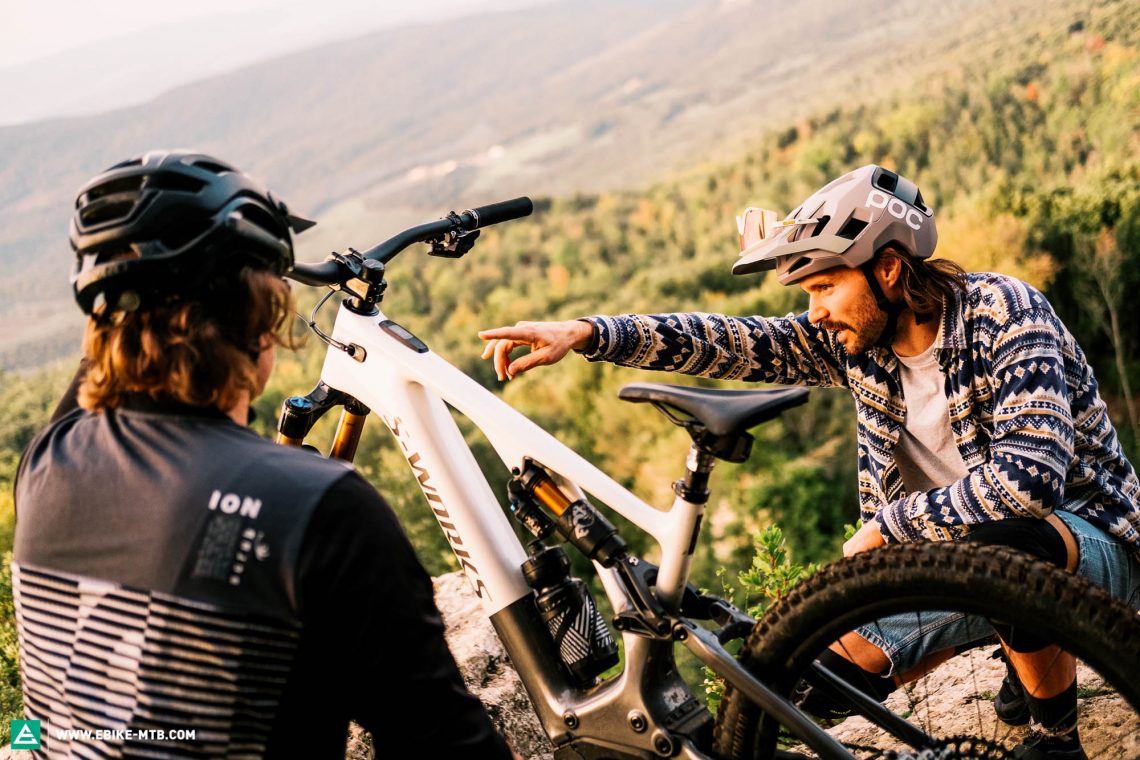
Handling – how does the bike ride?
Although we could save a hell of a lot of time and effort by just offering a simple rating along the lines of “very good” or “great”, that would neither reflect each bike’s nuances nor be particularly helpful. We want to present the character of each bike which just wouldn’t be possible using a rigid grading system which oversimplifies things. In the end, we don’t think that approach would do our readers justice. A bike can’t just be “excellent” or “great” because its handling will always be better for one purpose and less so for another. Besides that, we’re convinced that every reader and rider – meaning you – has different needs and preferences and has to identify for themselves which bike is most appropriate for them. Any other approach would be misleading and besides being unfair to the brands, it wouldn’t do justice to our readers.
That’s why the key questions we ask ourselves with every review are: “Who is this bike for? And who is this bike not for?” Whenever we write a review, our aim is to delve into both these questions and thereby give you a clear recommendation for or against the bike. But we’ve also created ratings scales to summarise the individual traits of a bike at the end of every review to help you quickly see if it could be what you’re looking for. We’ve created this guide to help you better understand the criteria.
The best eMTBs manage to combine characteristics that you’d think are contradictory, such as being both agile and composed. The higher the rating, the better the bike is at an individual trait. However, it is important to read the review itself, where we delve into the bike’s characteristics in much more detail. Our ratings are based on a scale of 1–10.
The ratings refer to the bikes in this year’s group test and the current state of eMTB development.
A brief explanation of the individual traits
Agility (cumbersome – playful)
How does the bike behave on the trail, going uphill or downhill? How nimble is it? How agile is the bike through corners, how much fun is it navigating tight sections and how quickly can it change direction?
Stability (nervous – confident)
Is the bike stable at high speeds? Is it easy to stay in control on demanding terrain? How composed is it on rough trails? Stability is a combination of balanced geometry, good suspension and good components.
Handling (demanding – balanced)
This is all about how balanced the bike is and how much input it needs to be manoeuvered. Balanced bikes require little input from the rider and always remain very predictable. If a bike is unbalanced, the rider has to get actively involved, for example weighting the front wheel to avoid understeer. However, experienced riders can have just as much on an unbalanced bike.
Fun factor (planted – poppy)
Is there a scientific method for measuring a grin? This is mainly about the suspension and the bikes responsiveness. How much pop does the suspension have? How well does the bike respond to input from the rider and how dynamic and lively is it to ride?
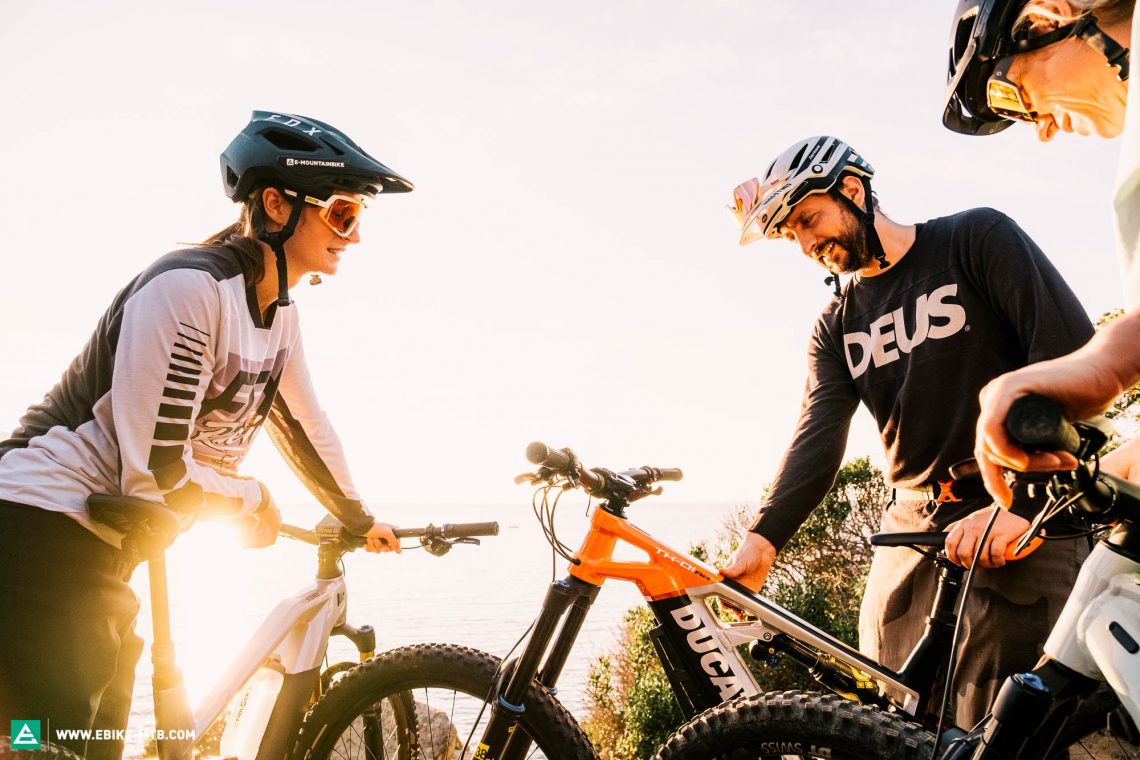
The ratings refer to the bikes in this year’s group test and the current state of eMTB development.
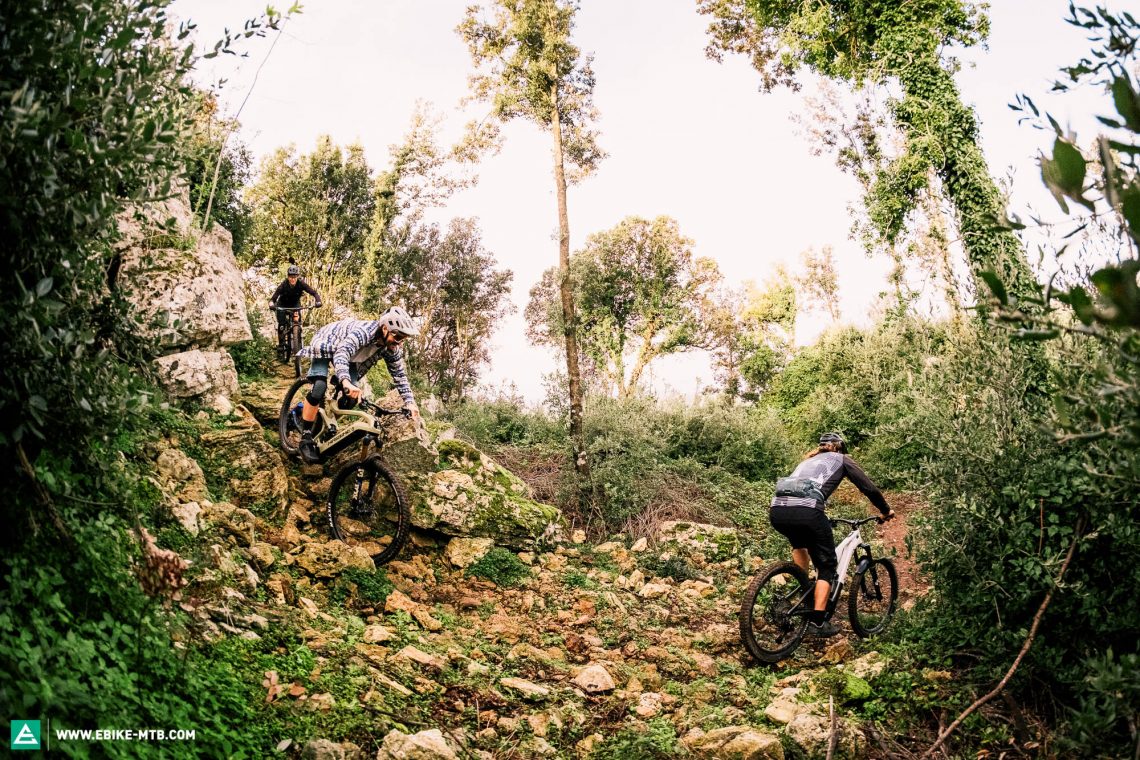
Motor feeling (digital – natural)
What does the assistance of the motor feel like? Does it kick in suddenly and feel like it’s either on or off, full-throttle or nothing at all? How easily can you control the motor with the power you’re putting through the pedals. How long after you stop pedalling does it carry on assisting? How quickly does the motor respond and accelerate when you put in a hard pedal stroke to get up and over an obstacle? How noisy is it? The most natural feeling motor engages or disengages almost imperceptibly as you cross the 25 km/h threshold or when you start or stop pedalling. It should also be capable of delivering its maximum power output over a wide range of pedalling cadences.
Motor power (weak – strong)
Which bike leaves the competition behind on a steep climb? Even if bike brands use the same motor, real-world performance can differ. This might be because of a different motor tune or because the bike as a whole (suspension kinematics and tires etc.) either hinders or supports the motor more than another bike.
Value for money (terrible – very good)
We don’t calculate value for money in an excel spreadsheet or based on how well a bike is specced. We are more concerned with how a bike performs on the trail and how the bike and its components benefit the rider. What good are the best components if the bike doesn’t perform well on the trail? Even expensive bikes that are specced with lower-end componentry can offer good value for money, provided they deliver a convincing performance where it counts. In exactly the same way, a supposedly cheap bike with the best components can get a bad rating if it doesn’t deliver on the trail.
Here are two ratings with a short summary as an example:

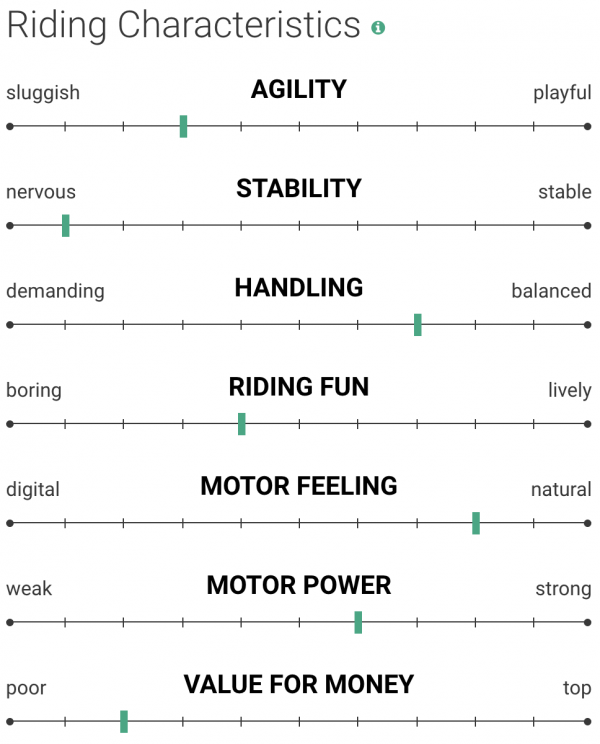
The intended use of the bike
We are convinced that eMTBs can’t be categorised based on their suspension travel or their geometry. Most of the bikes are simply too versatile to be shoehorned like this. Equipped with a motor, they can be just as suited to long days in the saddle as they are to shuttle runs in the bike park. The best all-rounders excel in several disciplines.
Forest roads
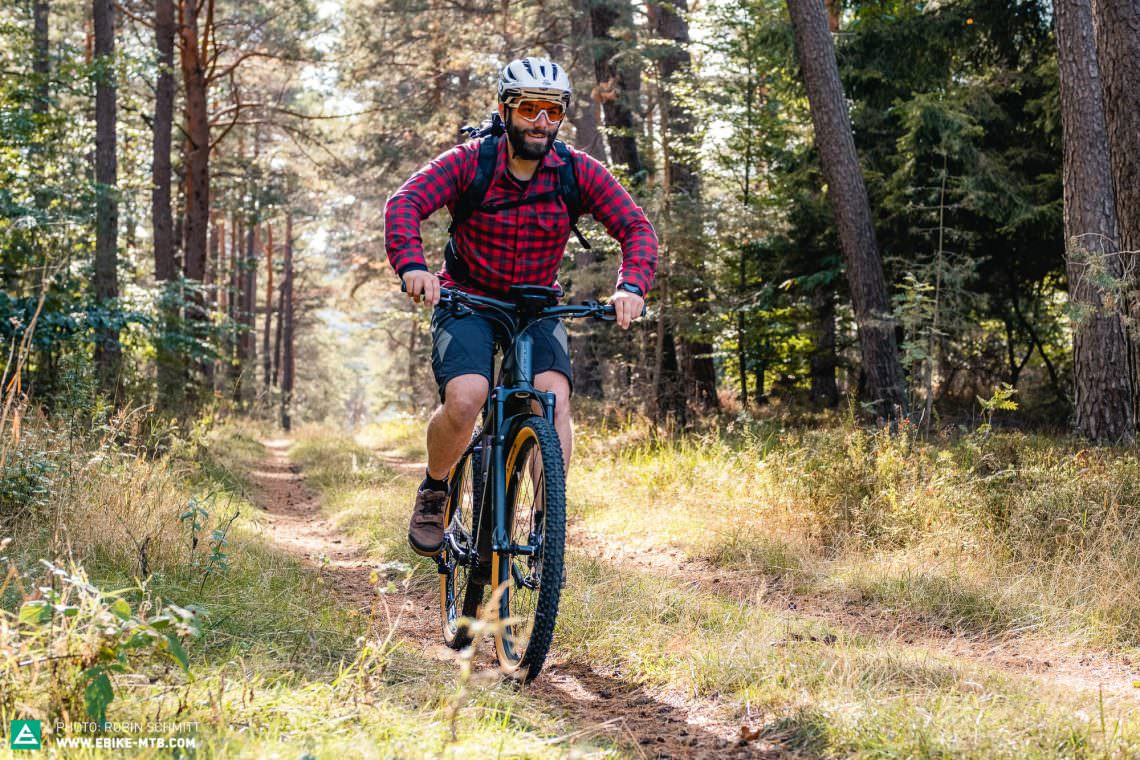
Flow trail uphill
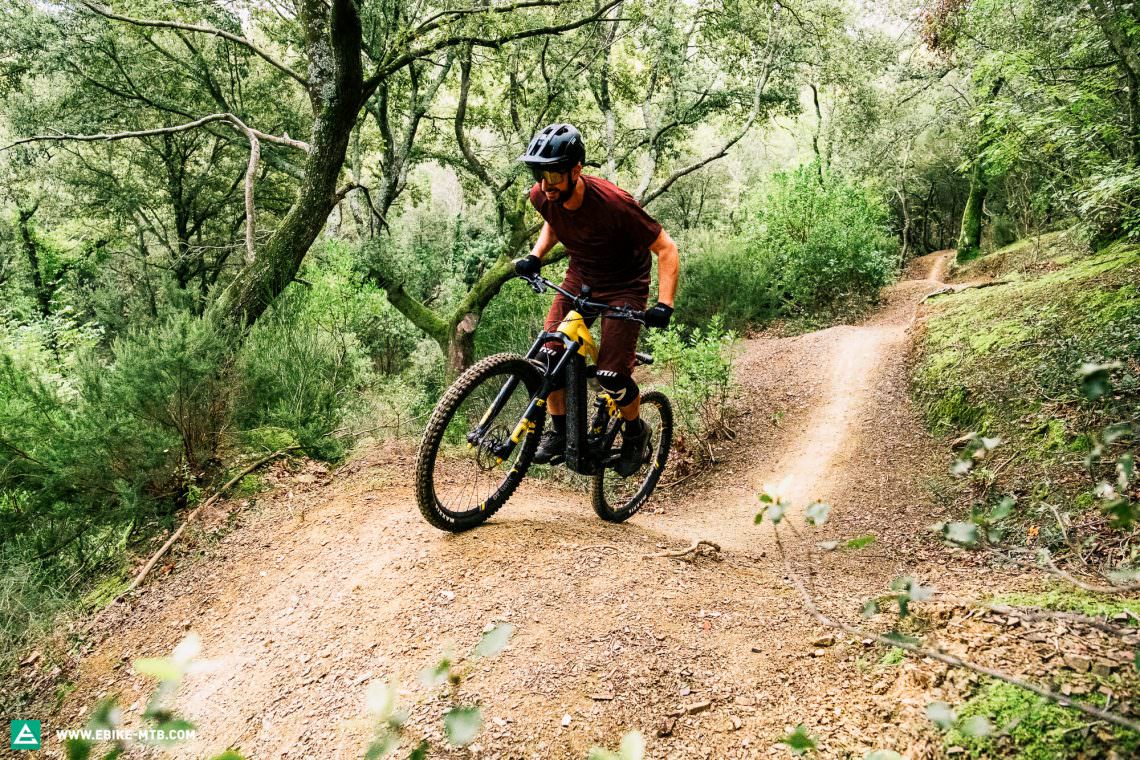
Flow trail downhill
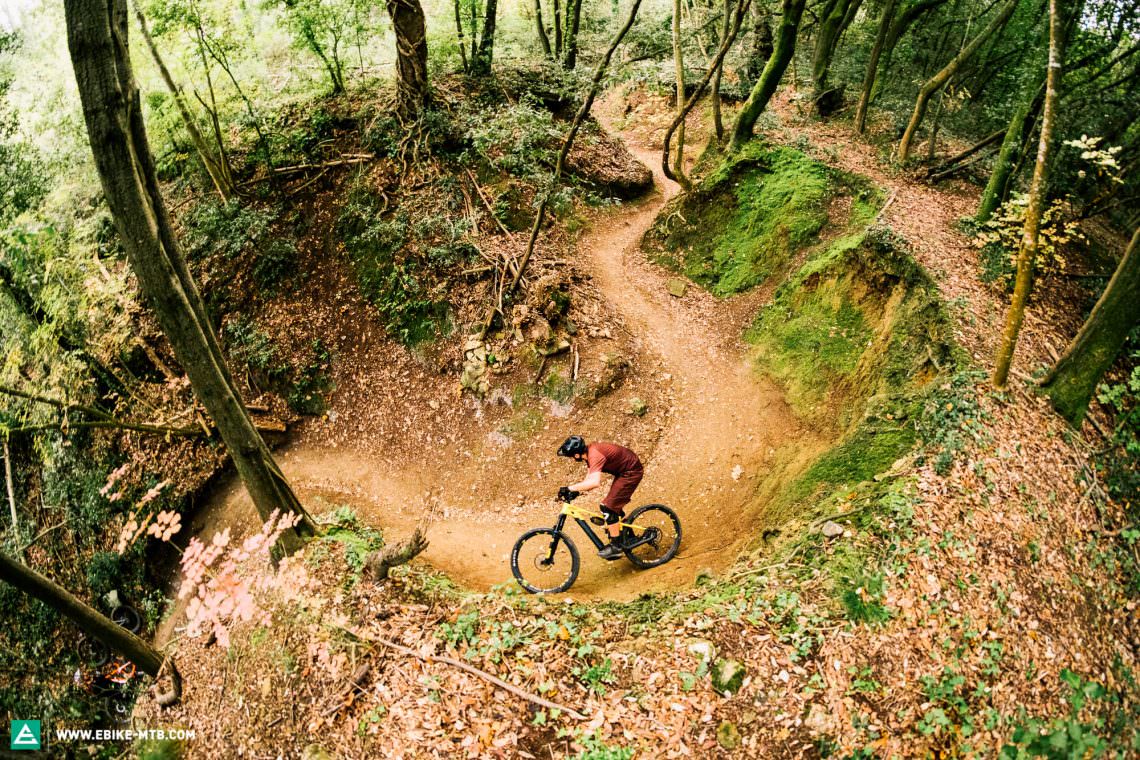
Technical single trail uphill
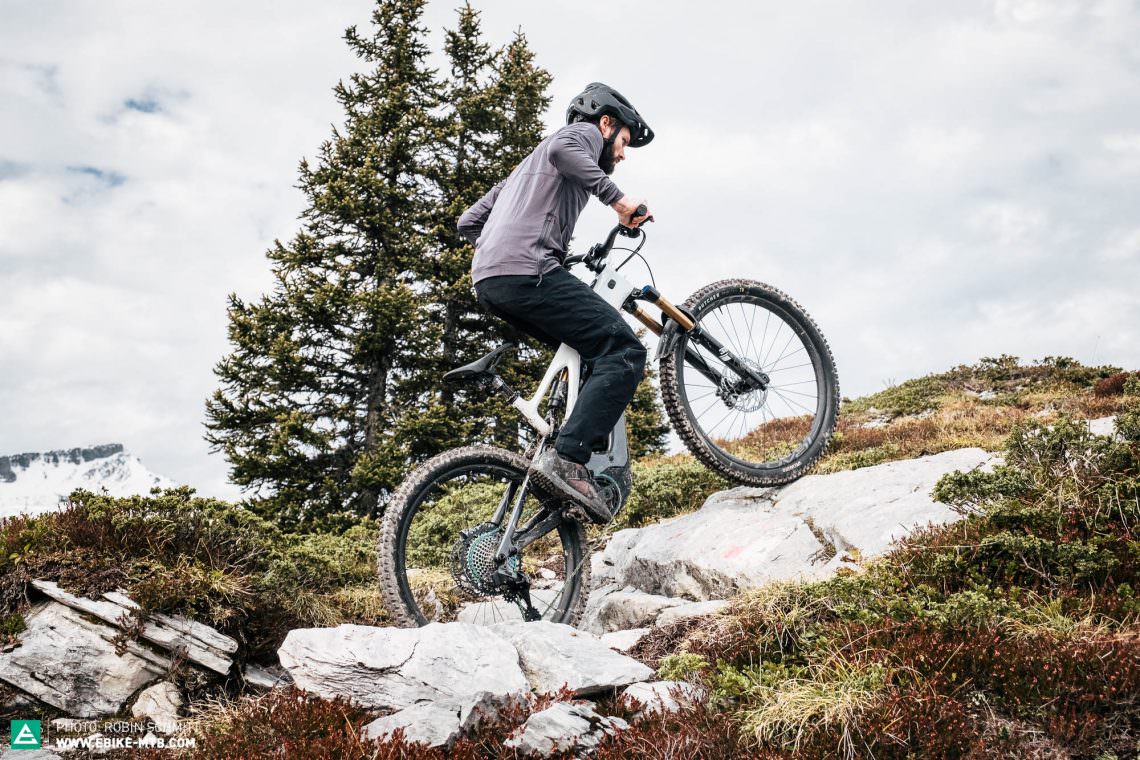
Technical single trail downhill
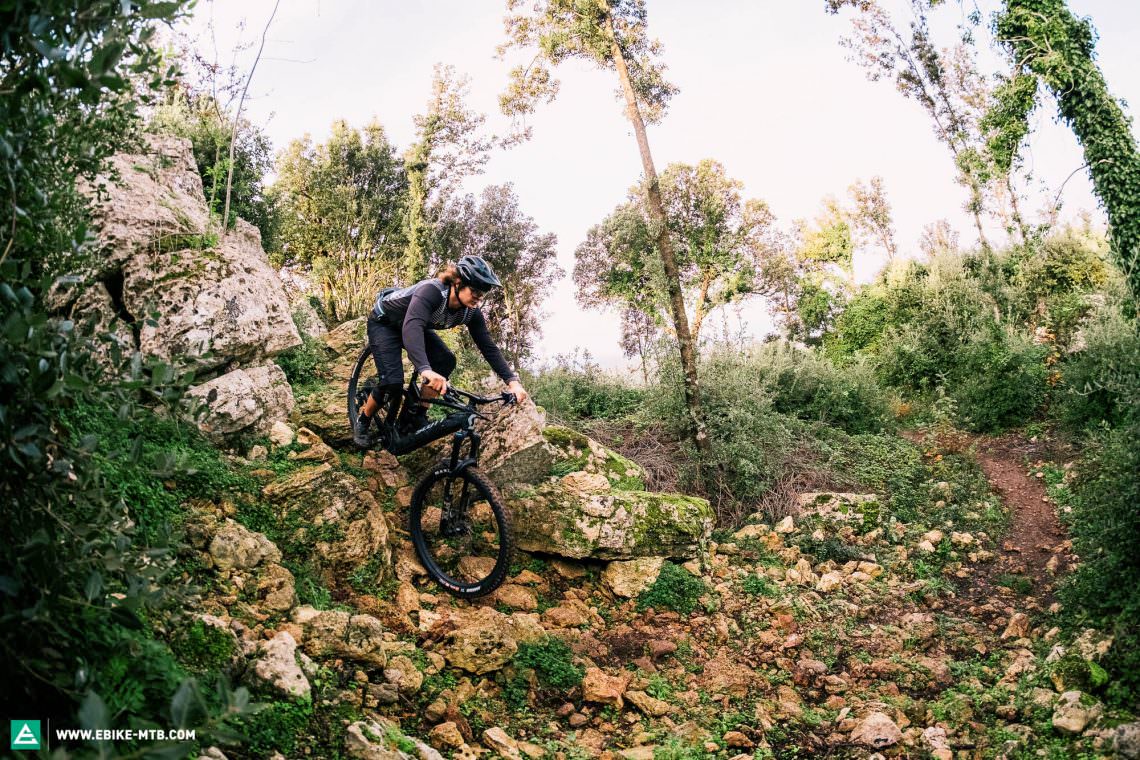
Downhill tracks
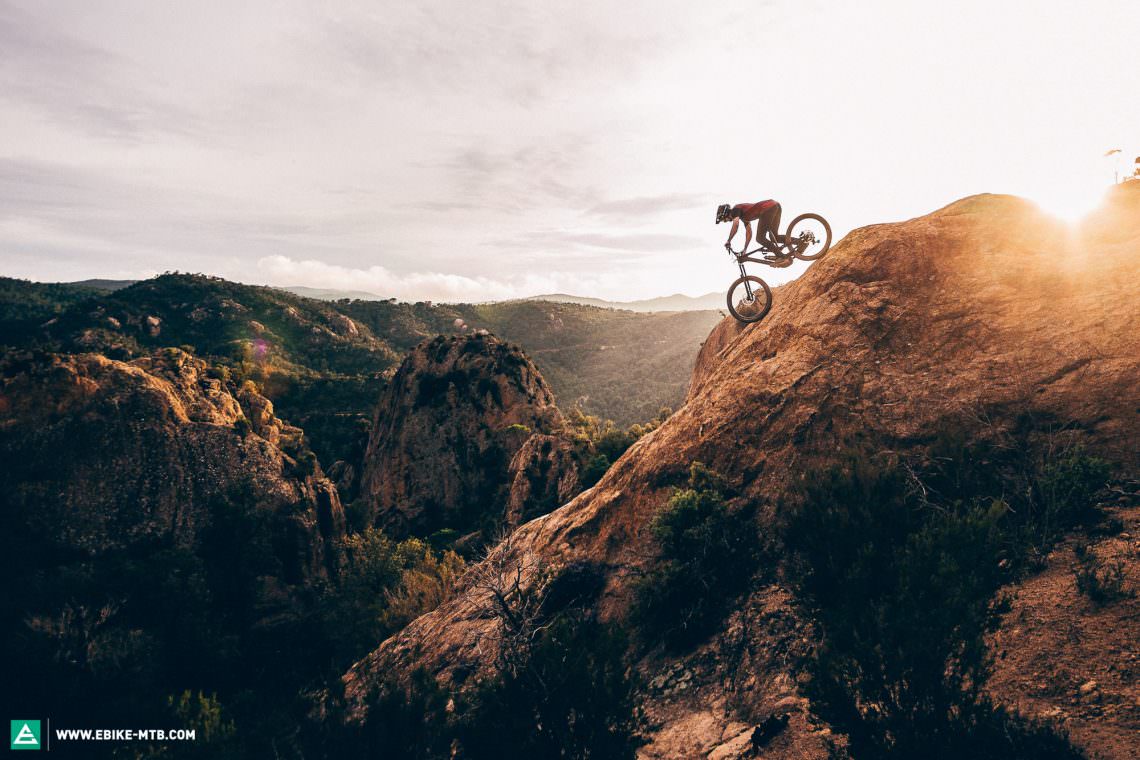
Here are two ratings with a short summary as an example:
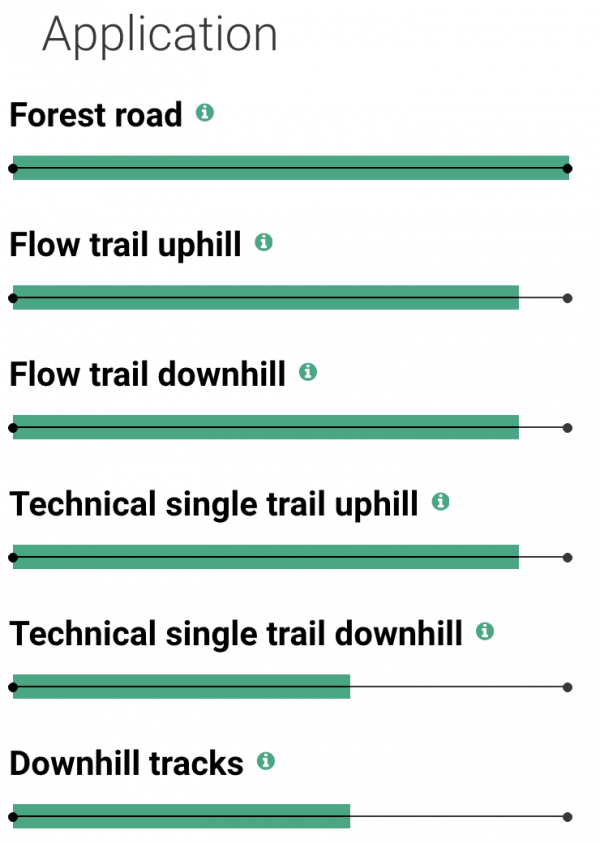

The pace of eMTB development is extremely rapid. A few years ago, many eMTBs had massive shortcomings in both spec and geometry. But the majority of the eMTBs in our current group test offer performance that is on par with non-motorised mountain bikes. Of course, our expectations and requirements of the best eMTB of the year have to follow suit. It is for this reason that our evaluations of the bikes’ handling traits and versatility are always changing and can’t be directly compared with the previous year’s assessments.
Should you have any further questions about the ratings, drop us an email: hello@ebike-mtb.com
Did you enjoy this article? If so, we would be stoked if you decide to support us with a monthly contribution. By becoming a supporter of E-MOUNTAINBIKE, you will help secure a sustainable future for high-quality cycling journalism. Click here to learn more.
Words & Photos:








